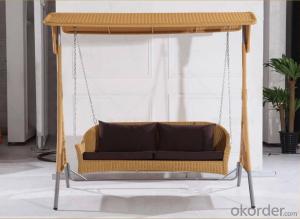Finned Aluminum Plate
Finned Aluminum Plate Related Searches
Led Light Bulbs For Ceiling Fixtures Led Lamps For Ceiling 42 In Ceiling Fan With Light Aluminum Coil Stock For Gutters Aluminum Foil For The Grill Hole Saw For Aluminum Plate Aluminum Tread Plate For Trailer Bow Plate For Aluminum Boat Aluminum Foil For Grow Room Aluminum Foil For Joint PainHot Searches
Stock Price For Aluminum Aluminum Coil Stock For Sale Aluminum Gutter Coil For Sale Used Aluminum Scaffolding For Sale 1/4 Aluminum Plate For Sale Aluminum Bar Stock For Sale Aluminum Round Stock For Sale Aluminum Diamond Plate For Sale Aluminum Scaffolding For Sale Craigslist 6061 Aluminum Plate For Sale Aluminum Dock Plate For Sale 7075 Aluminum Plate For Sale Aluminum Tread Plate For Sale Aluminum Checker Plate For Sale Aluminum Plate For Sale Near Me Plate Aluminum For Sale Aluminum Plate For Sale Aluminum Square Stock For Sale Aluminum Flat Stock For Sale Billet Aluminum Stock For SaleFinned Aluminum Plate Supplier & Manufacturer from China
Okorder.com is a professional Finned Aluminum Plate supplier & manufacturer, offers integrated one-stop services including real-time quoting and online cargo tracking. We are funded by CNBM Group, a Fortune 500 enterprise and the largest Finned Aluminum Plate firm in China.Hot Products
FAQ
- No, aluminum sheet is not inherently fire-resistant. However, it does have a relatively high melting point and can conduct heat well, which can help slow down the spread of fire.
- Yes, aluminum sheets can be used for outdoor furniture. Aluminum is a popular choice for outdoor furniture due to its durability, lightweight nature, and resistance to rust and corrosion. It can withstand various weather conditions, making it suitable for outdoor use. Additionally, aluminum can be easily molded and shaped into different designs, allowing for a wide range of furniture styles. The use of aluminum sheets in outdoor furniture ensures longevity and aesthetic appeal, making it a practical and versatile choice for outdoor settings.
- Some common surface finishes for aluminum sheets in the construction industry include mill finish, anodized finish, brushed finish, and powder coated finish.
- Aluminum sheets are considered to be non-magnetic and have low susceptibility to electromagnetic interference.
- Yes, aluminum sheets can be and are often used in aerospace applications. Aluminum is a popular choice for aerospace manufacturing due to its lightweight yet strong properties, making it suitable for various components such as structural parts, fuselage panels, and wings. Additionally, aluminum's corrosion resistance and ease of fabrication make it a versatile material for aerospace engineers.
- How strong is aluminum per square inch, and at the same time how light is the aluminum per square inch?
- How strong aluminum is, depends on the specific alloy of aluminum, whether it is the aluminum 1000 series, or the 3000 series, or the 6000 series, or other variants. The 6000 series is most common for structural purposes. Do a search on its yield strength and its ultimate tensile strength, to get an idea of how strong your particular variant is. The alloy Aluminum 6061-T6 has a yield strength of 35000 lb/in^2, and an ultimate tensile strength of 42000 lb/in^2. This is for the case of pure tension with a uniform load. The square inches refers to its cross sectional area. The ultimate strength occurs at the point where it will completely rupture. The yield strength occurs at the point, where it still supports the load, but ceases to be reversible after the load is removed. Pure aluminum metal is much weaker than its alloys. It has a yield strength of about 1500 psi, and an ultimate strength of 10000 psi. For structural purposes, you almost always want to stay below the yield strength. How stiff aluminum is, is common among all alloys, as 10000000 psi. That is to say 10 million pounds of tension on an aluminum member with a cross sectional area of 1 inch, would hypothetically cause an increase equal to 1 length, if it were still in-tact and linear-elastic at that amount of stress. It isn't. A more realistic case, would be that 10000 pounds of tension on this member, would cause an 0.1% increase in length. As for how light aluminum is per square inch, that depends upon how long your rod is. A 3 ft rod weighs 3 times as much per square inch as does a 1 ft rod. The weight of a material is measured PER UNIT VOLUME rather than per unit area. Unless you are talking about a standard thickness. Aluminum 6061 alloys have a density of 0.0975 pounds/cubic inch. Pure aluminum has a this density as well, as do most of its alloys.
- Aluminum sheets and copper sheets differ in terms of conductivity. Copper is known to be an excellent conductor of electricity, being one of the most conductive metals available. It has a high electrical conductivity, which means it allows electricity to flow through it with minimal resistance. On the other hand, aluminum is also a good conductor of electricity, but it is not as conductive as copper. Aluminum has approximately 61% conductivity compared to copper. Therefore, if high conductivity is a primary requirement, copper sheets would be the better choice. However, if cost-effectiveness and lightweight properties are more important, aluminum sheets can still provide sufficient conductivity for many applications. Ultimately, the choice between aluminum and copper sheets depends on the specific needs of the project and the balance between conductivity, cost, and other factors.














































